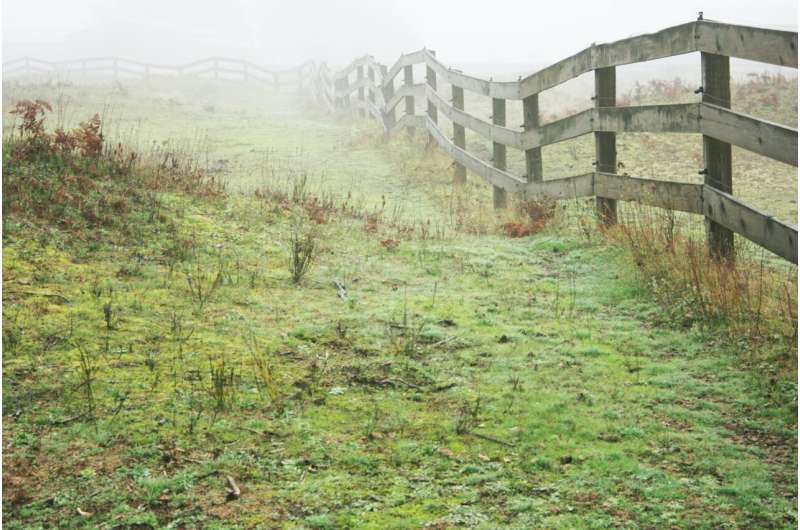On the fence: New research taps rancher expertise on living with carnivores

They say that good fences make good neighbors, which is especially true when you share space with gray wolves and grizzly bears.
In places like Wyoming and Idaho, ranchers have learned practical fencing strategies to help to reduce ill-fated encounters between hungry wildlife, vulnerable livestock and valuable produce. Utah State University researchers are learning to take advantage of this hard-won knowledge, according to new research.
"Research about wildlife fencing is often missing on-the-ground knowledge," said Julie Young of the Department of Wildland Resources and Ecology Center in the Quinney College of Natural Resources. "We wanted to reduce the cost and social burden of living with recovering wildlife populations, but we needed rancher input to do that."
Given all possible options for fencing material, placement and logistics, the team wanted to zero in on strategies that had the best chance for success. They turned to the ranchers who have worked for decades in the "trenches" of wildlife conflict to help.
Young organized a group that included livestock producers, natural resource managers and university-based researchers. They met for four months—early in the morning to accommodate producers' crack-of-dawn schedules. Participants were exposed to the reality of fencing designs and considerations across different scales: from hobby farms to orchard and apiary protection, to large cow-calf operations. The researchers learned about regulatory implications and obstacles to fencing on certain rangelands, which informed how they thought about adoption and the practicality of their research.
Once the research project began to take shape, they took the plan back to the ranchers for feedback.
"Our original design looked just at the effectiveness of fencing designs for preventing conflicts with agriculture or livestock. Concerns about human safety was something we initially overlooked," said Rae Nickerson, co-author on the research and a Ph.D. student in the Department of Wildland Resources and Ecology Center.
But fencing projects are often located near homestead areas, the researchers learned, and human safety was an issue important to the group.
"Some of the new things we learned from the process required flexibility in the process," Nickerson said. "But it offered a unique way to prioritize our approach. It really took advantage of a diverse set of knowledge and experience."
Researchers involved in creating preventative strategies for wildlife often view the issue from the perspective of the ecology of carnivores, but that's not the sole priority of most producers. The researchers learned that they needed to integrate not just how and where fences were effective, but also how to make funding opportunities and paperwork more flexible for the producers. Ranching operations near increasing populations of large carnivores need information quickly, they said, before problems get out of control.
The group also planned strategies to get the word out about what ended up working, once the research was complete.
"Often the most promising and innovative tools aren't circulated to managers and ranchers because they aren't recorded or widely shared," Young said. "The people who discover new and innovative tools to keep wildlife predators separate from livestock, grain storage and beehives often don't have good ways to communicate their successes to others."
Word-of-mouth can work, she said, but many of these folks are geographically separated from other producers confronted with the very same challenges. The team's research will continue to look at the efficacy of using non-lethal tools to reduce wildlife conflicts and ways to disseminate best practices to more livestock owners.
The research is published in Frontiers in Conservation Science.
More information: Matthew Hyde et al, Multidisciplinary engagement for fencing research informs efficacy and rancher-to-researcher knowledge exchange, Frontiers in Conservation Science (2022). DOI: 10.3389/fcosc.2022.938054
Provided by S.J. & Jessie E. Quinney College of Natural Resources, Utah State University




















